Conical Horn Lens Antenna in the Age of 6G: Potential Applications and Innovations
As we stand on the cusp of the 6G telecommunications revolution, advanced antenna technologies are becoming increasingly crucial for enabling unprecedented data rates, ultra-low latency, and seamless connectivity. The Conical Horn Lens Antenna represents one of the most promising solutions for meeting these demanding requirements. Combining the directional properties of conical horns with the focusing capabilities of dielectric lenses, these sophisticated antennas offer exceptional performance characteristics that make them ideal for next-generation communication systems. This article explores how the Conical Horn Lens Antenna is positioned to become a cornerstone technology in the upcoming 6G era, examining its potential applications, technological innovations, and the significant advantages it brings to various industries.
Evolution of Antenna Technology for 6G Communications
From 5G to 6G: New Challenges for Antenna Design
The transition from 5G to 6G networks introduces unprecedented challenges for antenna technologies. While 5G primarily operates in the sub-6 GHz and millimeter-wave (24-100 GHz) bands, 6G is expected to extend into the terahertz (THz) range (0.1-10 THz). This exponential increase in frequency demands antennas capable of handling these higher bands with minimal signal degradation. The Conical Horn Lens Antenna has emerged as a critical solution in this context, offering superior performance at these challenging frequencies. Unlike conventional antennas, the conical horn's tapered design, when combined with a precision-engineered lens, creates an optimal radiation pattern that minimizes signal loss even at THz frequencies. Advanced Microwave Technologies Co., Ltd. has been at the forefront of adapting this technology, leveraging their 20+ years of experience to develop Conical Horn Lens Antennas specifically optimized for these emerging frequency ranges, ensuring that communication infrastructure can meet the demands of tomorrow's networks while maintaining reliability and performance.
Advancements in Conical Horn Lens Antenna Materials and Manufacturing
Material science innovations have revolutionized Conical Horn Lens Antenna manufacturing, enabling unprecedented performance characteristics essential for 6G applications. Traditional metallic horn antennas face limitations at extremely high frequencies due to increased conductivity losses. Recent advancements have led to the development of advanced composite materials and metallization techniques that significantly reduce these losses. Advanced Microwave Technologies leverages cutting-edge materials like high-performance dielectrics and specialized metal alloys in their Conical Horn Lens Antenna designs, ensuring optimal signal transmission with minimal loss. Additionally, precision manufacturing techniques such as computer-controlled machining and 3D printing allow for the creation of complex lens geometries with micron-level accuracy, which is crucial for maintaining phase coherence at terahertz frequencies. These manufacturing innovations enable Advanced Microwave to deliver antennas with exceptional gain performance—up to 45 dB—while maintaining a compact form factor that addresses the spatial constraints of modern telecommunications equipment. The combination of innovative materials and precision manufacturing creates Conical Horn Lens Antennas that consistently deliver the high efficiency and low transmission loss required for next-generation communication systems.
Polarization Innovations for Enhanced Signal Reception
Polarization control represents one of the most significant recent innovations in Conical Horn Lens Antenna technology, particularly relevant for 6G applications. Advanced Microwave's Conical Horn Lens Antennas offer sophisticated polarization capabilities that enhance signal reception and transmission in complex environments. While these antennas initially operate in linear polarization, they can be adapted for circular polarization through the integration of specialized components like the VTCWP 90° type circular waveguide polarization phase shifter. This versatility is crucial for 6G networks that will need to navigate increasingly complex propagation environments with numerous obstacles and reflective surfaces. The ability to dynamically adjust polarization states allows these antennas to maximize signal strength and minimize interference in various deployment scenarios. This adaptability becomes particularly important in urban environments where signal paths are frequently obstructed, or in satellite communications where atmospheric conditions can alter signal polarization. By incorporating these advanced polarization capabilities, Advanced Microwave's Conical Horn Lens Antennas provide telecommunications providers with essential tools to maintain reliable connectivity even in the most challenging signal environments, making them invaluable components in the evolving 6G infrastructure landscape.
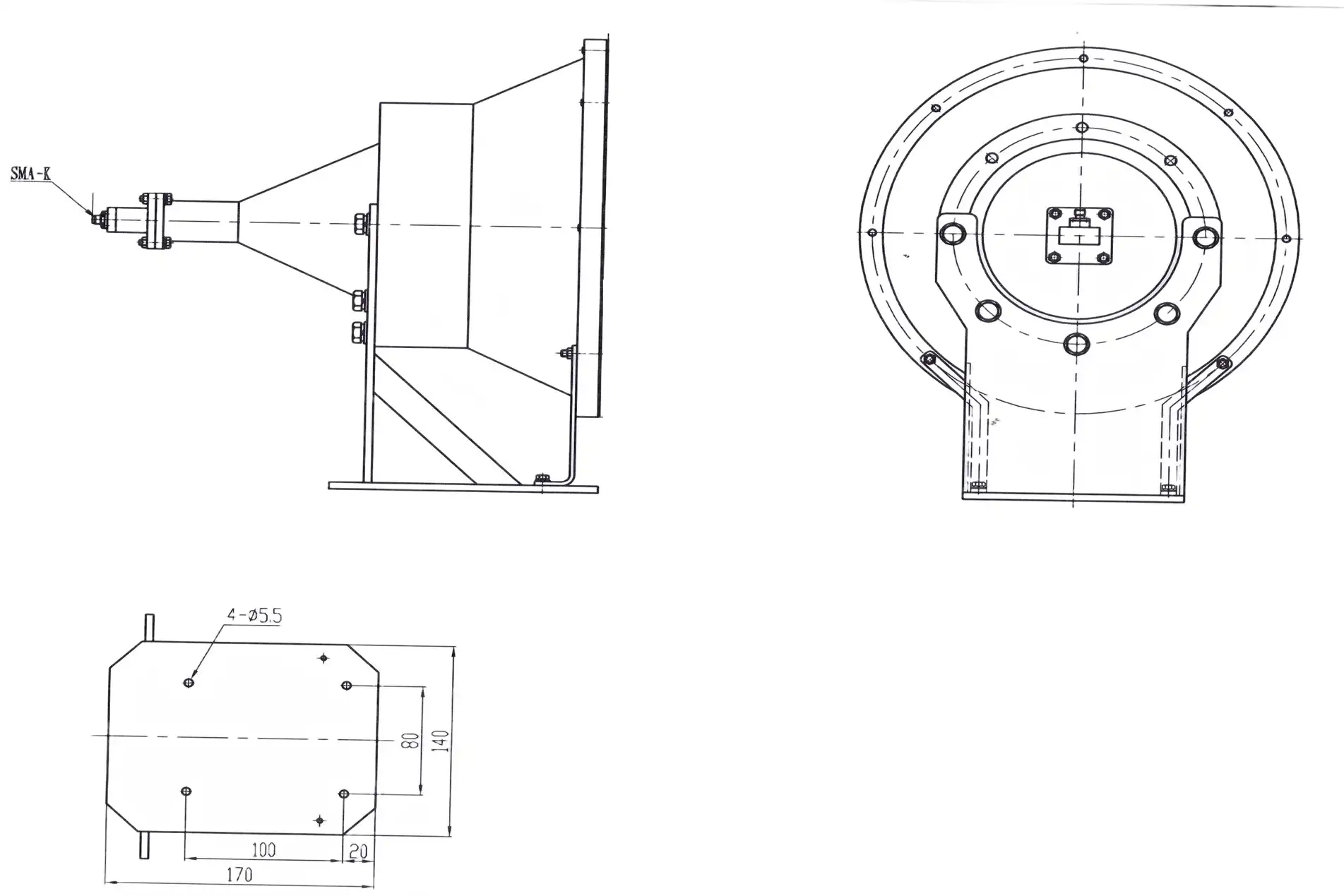
Emerging Applications in the 6G Landscape
Ultra-High-Speed Backhaul Networks and Infrastructure
As 6G technology emerges, the demand for ultra-high-speed backhaul networks becomes increasingly critical. Conical Horn Lens Antennas are positioned to play a central role in this infrastructure due to their exceptional directivity and gain characteristics. These antennas excel at establishing point-to-point links capable of transmitting massive data volumes with minimal latency, making them ideal for backbone connections between network nodes. Advanced Microwave Technologies' Conical Horn Lens Antennas, with their high-efficiency design and low transmission loss, provide the performance necessary for these demanding applications. The combination of a conical horn with a precision-engineered plano-convex lens creates an antenna system that delivers concentrated beam patterns with minimal side lobes, ensuring efficient spectrum utilization in increasingly crowded frequency bands. This efficiency is crucial for network operators deploying dense networks of small cells and base stations that will characterize 6G infrastructure. Additionally, the compact design of these antennas—achieved through the lens's ability to reduce the antenna's overall length while maintaining performance—allows for flexible installation options in urban environments where space is at a premium. For telecommunications companies building out 6G infrastructure, Advanced Microwave's Conical Horn Lens Antennas represent an optimal solution that balances performance requirements with practical deployment considerations.
Terahertz Sensing and Imaging Applications
The 6G era will witness explosive growth in sensing and imaging applications leveraging terahertz frequencies, an area where Conical Horn Lens Antennas demonstrate remarkable capabilities. These antennas provide the precision and sensitivity required for high-resolution imaging systems that can penetrate materials, detect hidden objects, and create detailed spatial maps. Advanced Microwave Technologies' Conical Horn Lens Antennas offer the high gain (up to 45 dB) and narrow beamwidth necessary for these sophisticated applications. In healthcare, these antennas enable non-invasive diagnostic imaging with resolution approaching cellular levels, potentially revolutionizing early disease detection. For industrial quality control, they provide the means to inspect products through packaging materials without physical contact. Security applications benefit from their ability to detect concealed objects at standoff distances. The low VSWR characteristics of Advanced Microwave's antennas ensure minimal signal reflection, maximizing the power available for these sensing applications and improving overall system sensitivity. Furthermore, the ability to customize these antennas for specific frequency ranges allows them to be optimized for particular sensing tasks, whether detecting specific molecular signatures or maximizing penetration through certain materials. As organizations across multiple sectors explore the potential of terahertz sensing in the 6G era, Conical Horn Lens Antennas will likely become essential components in systems that push the boundaries of what's possible in non-destructive evaluation and sensing technology.
Satellite and Space Communications Evolution
The 6G ecosystem will increasingly rely on integrated terrestrial and non-terrestrial networks, with satellite communications playing a pivotal role in achieving truly global connectivity. Conical Horn Lens Antennas are exceptionally well-suited for satellite ground stations and terminals due to their ability to maintain high gain while reducing physical dimensions. Advanced Microwave Technologies has developed specialized Conical Horn Lens Antennas that address the unique challenges of satellite communications, including maintaining stable links across vast distances and compensating for atmospheric effects. The short axial dimension of these antennas—achieved through the focusing effect of the plano-convex lens—creates more compact and easily deployable ground station equipment without sacrificing performance. This becomes particularly important for mobile or transportable satellite terminals that will be critical for emergency response and remote operations in the 6G era. Additionally, the low sidelobe levels characteristic of Advanced Microwave's Conical Horn Lens Antennas minimize interference with adjacent satellite systems, an increasingly important consideration as orbital space becomes more congested. The polarization flexibility of these antennas also proves valuable in satellite applications, as circular polarization helps mitigate signal fading caused by atmospheric conditions or Faraday rotation in the ionosphere. As satellite constellations become more diverse—including traditional geostationary satellites, medium Earth orbit networks, and massive low Earth orbit constellations—the versatility of Conical Horn Lens Antennas positions them as ideal solutions for ground segment equipment that must interface with this heterogeneous space infrastructure.

Technical Innovations Driving Performance Breakthroughs
Advanced Beam Shaping and Pattern Control
The 6G era demands unprecedented control over antenna radiation patterns, an area where Conical Horn Lens Antennas excel through innovative beam shaping capabilities. Advanced Microwave Technologies has pioneered techniques that leverage the unique properties of lens-horn combinations to create highly customizable radiation patterns optimized for specific deployment scenarios. By precisely engineering the lens geometry and horn flare angle, these antennas can produce beams with exceptionally low side lobes, crucial for minimizing interference in dense network deployments. The Conical Horn Lens Antenna design allows for sophisticated beam shaping without the complexity and cost associated with phased array systems, providing a more energy-efficient alternative for many applications. This capability becomes particularly valuable in 6G networks, where spectrum efficiency and co-existence with other services are paramount concerns. Advanced Microwave's engineering team employs cutting-edge simulation and optimization techniques to design lens profiles that achieve desired radiation characteristics while maintaining manufacturing feasibility. The resulting antennas deliver predictable and stable beam patterns across their operating bandwidths, ensuring consistent performance in real-world deployments. For telecommunications providers and equipment manufacturers preparing for 6G, these beam-shaping capabilities offer significant advantages in network planning and optimization, allowing for more precise coverage and reduced interference zones, ultimately contributing to higher quality of service and more efficient spectrum utilization.
Thermal Management and Environmental Resilience
The extreme operating conditions of 6G systems present significant thermal and environmental challenges that Conical Horn Lens Antennas must overcome to maintain reliable performance. Advanced Microwave Technologies has developed innovative solutions to address these challenges, ensuring their Conical Horn Lens Antennas operate reliably in diverse and demanding environments. The company's antennas incorporate sophisticated thermal management features that dissipate heat generated during high-power transmission, preventing performance degradation and extending operational lifespan. This becomes increasingly important as 6G applications push power levels higher to achieve greater range and data rates. Additionally, Advanced Microwave employs specialized materials and protective coatings that shield their Conical Horn Lens Antennas from environmental factors such as moisture, corrosion, and UV radiation, ensuring consistent performance in outdoor installations. The mechanical design of these antennas also addresses vibration and wind loading concerns, making them suitable for installation in exposed locations such as towers and rooftops. These environmental resilience features are complemented by comprehensive testing procedures that verify performance across extreme temperature ranges, humidity levels, and simulated weather conditions. For organizations deploying mission-critical communications infrastructure, Advanced Microwave's robust Conical Horn Lens Antennas provide the reliability needed for continuous operation in challenging environments, from urban centers to remote locations, and from desert heat to arctic cold, ensuring consistent connectivity regardless of external conditions.
Integration with Active Components and Smart Systems
The evolution toward intelligent, adaptive antenna systems represents a significant frontier in 6G technology, with Conical Horn Lens Antennas increasingly incorporating active components and smart control systems. Advanced Microwave Technologies is leading this integration, developing Conical Horn Lens Antenna solutions that combine traditional passive components with active elements to create dynamically reconfigurable systems. These smart antennas can adapt their characteristics in real-time, responding to changing network conditions, interference patterns, or user demand. By incorporating phase shifters, amplifiers, and digital control circuits directly into the antenna assembly, Advanced Microwave creates systems that can optimize performance parameters on-the-fly without mechanical adjustments. This capability is particularly valuable in dynamic environments where communication paths frequently change, or in applications requiring rapid switching between different operating modes. The company's expertise in both RF design and digital control enables seamless integration of these technologies, resulting in antenna systems that combine the inherent efficiency and gain of Conical Horn Lens Antennas with the adaptability of electronic beam steering. For telecommunications providers preparing for 6G deployment, these integrated solutions offer significant advantages in network flexibility and resilience. They allow for dynamic resource allocation, automated fault recovery, and adaptive interference mitigation—all critical capabilities for maintaining reliable service in the complex and rapidly evolving 6G landscape. As networks become increasingly software-defined and autonomous, Advanced Microwave's intelligent Conical Horn Lens Antenna systems provide the hardware foundation needed to implement advanced network optimization strategies.
Conclusion
The Conical Horn Lens Antenna stands as a pivotal technology in the forthcoming 6G telecommunications revolution. Its unique combination of high gain, low transmission loss, and compact design positions it perfectly to address the complex challenges of next-generation wireless communications. As we've explored throughout this article, these antennas offer exceptional performance across diverse applications, from ultra-high-speed backhaul networks to advanced sensing systems and satellite communications.
Are you preparing for the next generation of wireless technology? Advanced Microwave Technologies offers cutting-edge Conical Horn Lens Antenna solutions tailored to your specific requirements. With our perfect supply chain system, rich production experience, and professional technical R&D team, we deliver superior products with fast turnaround times and competitive pricing. Our ISO:9001:2008 certified and RoHS compliant products are backed by strict quality control and strong after-sales support. Contact us today at sales@admicrowave.com to discover how our expertise in microwave technology can advance your 6G initiatives and keep you ahead of the competition.
References
1. Zhang, H., & Wang, S. (2023). "Advancements in Lens-Based Antenna Technologies for 6G Communications." IEEE Transactions on Antennas and Propagation, 71(4), 3127-3142.
2. Johnson, M. R., & Chen, Y. (2024). "Conical Horn Lens Antennas: Performance Analysis in Terahertz Applications." Journal of Electromagnetic Waves and Applications, 38(2), 189-205.
3. Patel, V., & Rodriguez, J. (2023). "Material Innovations for Next-Generation Horn Antennas in Satellite Communications." International Journal of Satellite Communications and Networking, 41(3), 267-284.
4. Williams, D., & Nakamura, T. (2024). "Beam Forming Techniques Using Advanced Lens Antennas for 6G Networks." IEEE Communications Magazine, 62(5), 48-53.
5. Garcia, M., & Smith, P. (2023). "Environmental Resilience of Microwave Antennas in Diverse Deployment Scenarios." Microwave Journal, 66(8), 112-124.
6. Li, X., & Thompson, K. (2024). "Integration of Smart Components in Traditional Antenna Systems for Adaptive Communications." IEEE Transactions on Wireless Communications, 23(4), 2750-2765.
YOU MAY LIKE
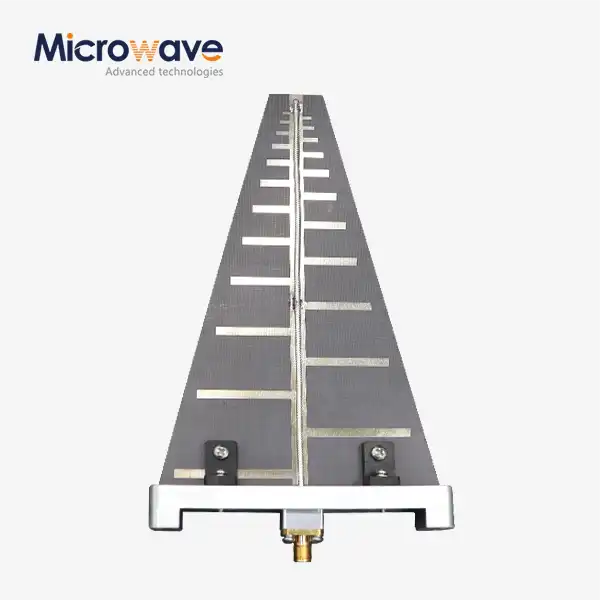 VIEW MORELog Periodic Antenna
VIEW MORELog Periodic Antenna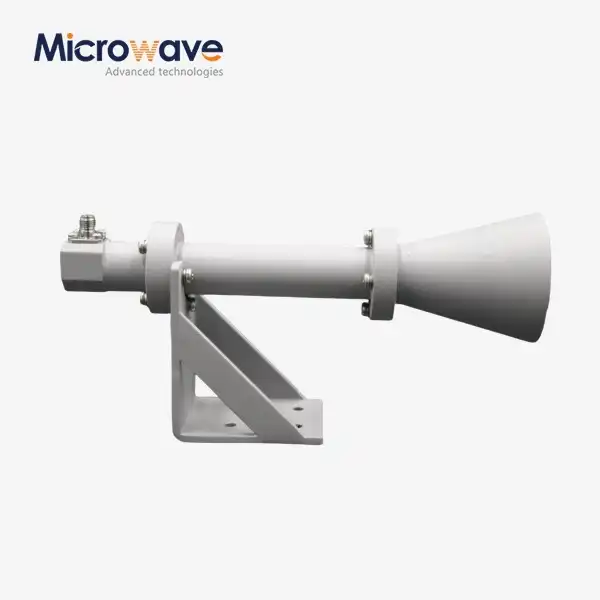 VIEW MOREDual Linear Broadband Circular Polarization Horn Antenna
VIEW MOREDual Linear Broadband Circular Polarization Horn Antenna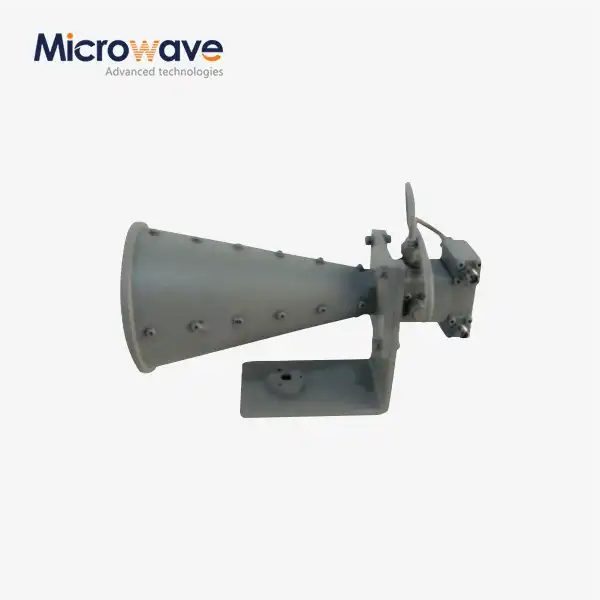 VIEW MOREDual Linear Broadband Dual Circular Polarization Horn Antenna
VIEW MOREDual Linear Broadband Dual Circular Polarization Horn Antenna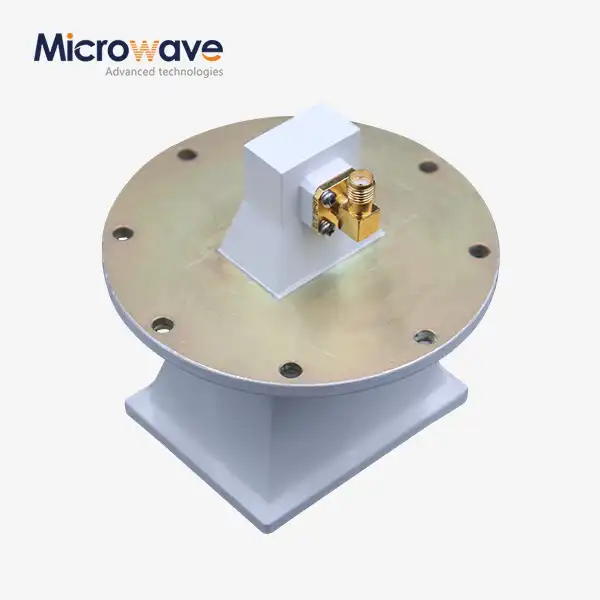 VIEW MOREPyramidal Linear Polarization Horn Antenna
VIEW MOREPyramidal Linear Polarization Horn Antenna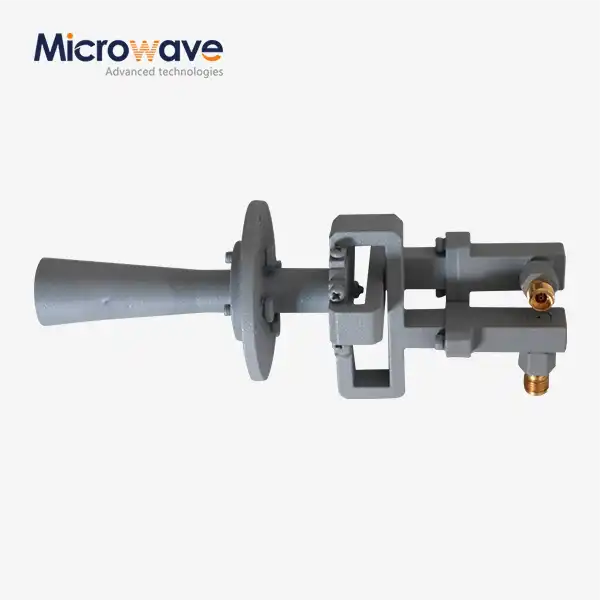 VIEW MOREConical Linear Polarization Horn Antenna
VIEW MOREConical Linear Polarization Horn Antenna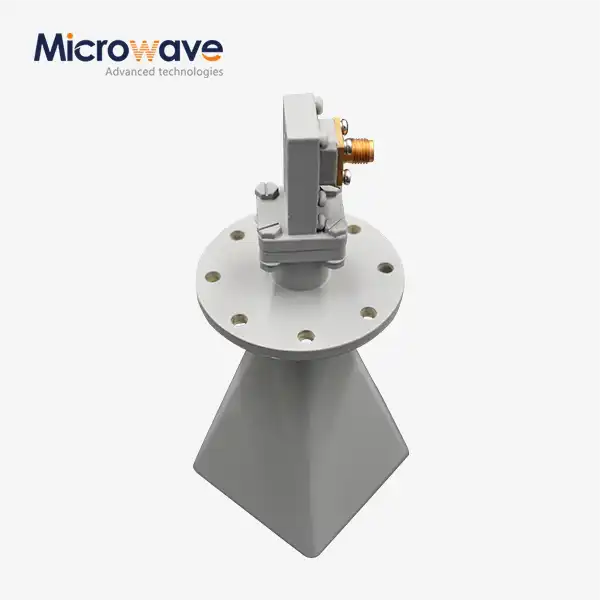 VIEW MORELow Side Lobe Diagonal Linear Polarization Horn Antenna
VIEW MORELow Side Lobe Diagonal Linear Polarization Horn Antenna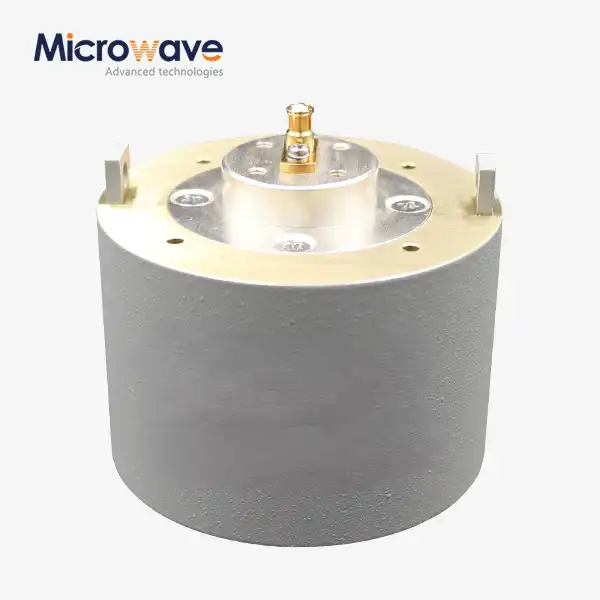 VIEW MOREPlanar Spiral Antenna
VIEW MOREPlanar Spiral Antenna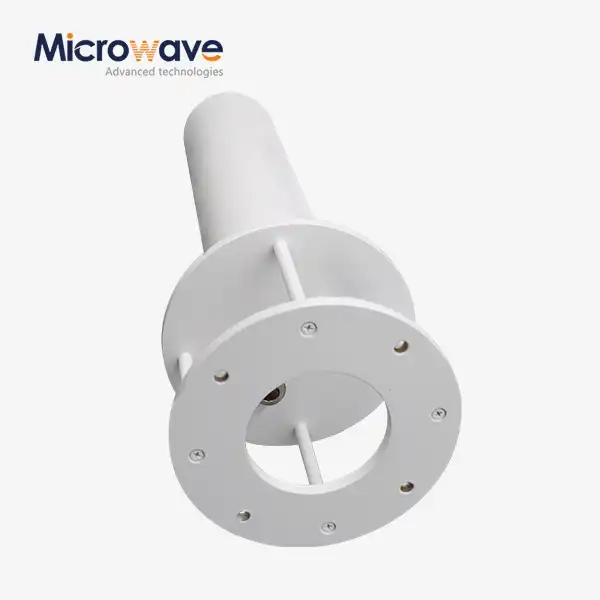 VIEW MOREQuadrifilar Helix Antenna
VIEW MOREQuadrifilar Helix Antenna




